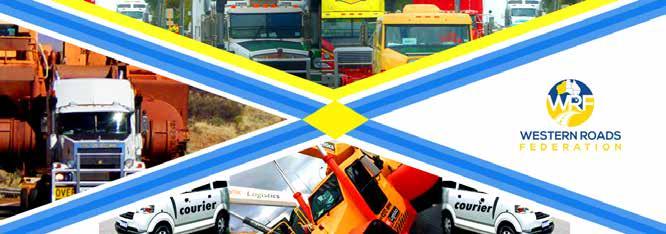Focus LRTAWA by David Fyfe, President, Livestock and Rural Transport Association of Western Australia (Inc)
Productivity post-election is vital for our industry
A
s the 2021 election draws nearer it is good timing for us to think about how we want the transport industry to evolve in the next four years, rural transport in particular. In other words what transport policies would we like to see from our major parties as they pitch for our support? At our conference last year, I highlighted an often- expressed view from our members that it should not be necessary to break the law in order to compete. Most of the complaints relate to an uneven playing field as a result of inequitable access and compliance. Road access goes hand in hand with productivity and efficiency. It is important that the policy makers understand this nexus and they must insist that access decisions are equitable and facilitate connection from pick up to destination such as depots, feedlots, abattoirs, hook-up areas. Transporters need the ability to deliver and remove product from farms on a network that does not have breaks in it and
2
WATM • March 2021
does not require trucks to take the long way round to get to the destination. Importantly we need a commitment that where there is an obstacle to a connected network, investment is made in overcoming it. Furthermore, it is critical that the government of the day takes responsibility for an efficient freight network at the micro level and works to overcome barriers regardless of who owns the asset. Avoiding an issue because the road is a local government responsibility is not acceptable if we genuinely want efficient freight. The current situation with Treeton Road North in Cowaramup is a classic example of a well-known barrier to productivity that the regulators seem reluctant to overcome. Treeton Road North is a 4.5km section of road that was suddenly removed from the network at the request of the Shire due to alleged road geometry issues. As a result transporters delivering cattle to Western Meat Processors have to stop prior to the road and break up into a smaller
combination and ferry livestock in. This restriction also severed connectivity of the route between feedlots and the abattoir with the alternative route being 35km further, taking 40 minutes longer and going straight through the Town of Cowaramup. Road train access down Greenmount Hill is another example. Whilst the current trial is a step in the right direction, there is a good deal of scepticism in the industry about the how the trial will be assessed and the likelihood of access being granted permanently. It is important with this trial, as with any trials, that there is open and transparent assessment against objective criteria, so industry has confidence in the final decision. Although it has unfortunately become a political football, we continue to support the construction of Roe 8 and 9 as being the best option to deliver an efficient and safe freight network to Fremantle Port or even a replacement port in Kwinana. Whichever party is successful at the March election needs to
















